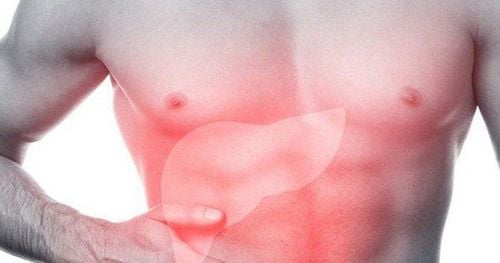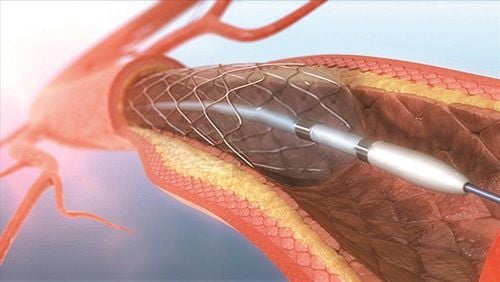Deep-frying is a popular cooking method used globally. This process is often applied by restaurants and fast-food chains as a quick and appealing way to prepare food. However, these foods tend to be high in calories and trans fats, leading to negative health impacts when consumed in excess.
1. Fried foods are high in calories
Fried foods are often coated in batter or flour before being deep-fried. Moreover, when submerged in hot oil, foods lose a certain amount of water content and absorb lipids, increasing their caloric content. Fried foods have significantly higher fat and calorie content compared to non-fried foods. For example, a small baked potato weighing 100 grams contains 93 calories and 0 grams of fat, while the same amount of 100 grams of fried potato contains 319 calories and 17 grams of fat.
2. Fried Foods are Often High in Trans Fats
Trans fats are formed when unsaturated fats undergo a hydrogenation process. Food manufacturers often hydrogenate lipids using high pressure and hydrogen gas to increase the shelf life and stability of the products, but hydrogenation also occurs when oil is heated to very high temperatures during cooking. The frying process alters the chemical structure of fats, making it difficult for your body to break them down, leading to negative health effects.
Trans fats are involved in an increased risk of many diseases, including heart disease, cancer, diabetes, and obesity.
An American study on soybean oil and canola oil showed that 0.6-4.2% of their fatty acid content contains trans fats. When soybean oil and canola oil are heated to high temperatures, such as during frying, their trans fat content can increase.
A study has shown that each time oil is reused for frying, the amount of trans fat in the fried food increases. However, it is important to distinguish between artificial trans fats and natural trans fats found in foods like meat and dairy products. These have not been shown to have the same negative health effects as those found in fried and processed foods.

3. Eating fried foods can lead to increased risk of disease
Several studies in adults have found a link between eating fried foods and an increased risk of chronic diseases. Eating fried foods increases the risk of type 2 diabetes, heart disease, and obesity.
3.1 Heart Disease
Eating fried foods can contribute to high blood pressure, low HDL (good) cholesterol, and obesity, all of which are risk factors for heart disease. People who eat fried foods more frequently have a higher risk of developing heart-related diseases.
A study conducted using fried fish found that women who ate one or more servings of fried fish per week had a 48% higher risk of heart failure compared to those who consumed 1-3 servings per month.
Another observational study examining fried foods found that a diet high in fried foods was associated with a significantly higher risk of heart attack. People who ate a diet high in fruits and vegetables had a significantly lower risk of disease.
3.2 Diabetes
Several studies have found that fried foods may increase your risk of developing type 2 diabetes. People who eat fast food more than twice a week have twice the risk of insulin resistance compared to those who eat less than once a week. Moreover, studies have also found a strong link between the frequency of fried food consumption and the risk of developing type 2 diabetes. Those who consumed 4-6 servings of fried food per week may have a 39% higher risk of developing type 2 diabetes compared to those who ate less fried food.
Similarly, those who ate fried foods seven or more times per week had a 55% higher risk of developing type 2 diabetes compared to those who consumed fewer servings per week.
3.3 Obesity
Fried foods contain more calories than non-fried foods, so eating a lot can significantly increase your calorie intake. Moreover, studies on fried foods have found that the trans fats in fried foods may play a significant role in weight gain, as they can affect hormones that regulate appetite and fat storage. Therefore, the problem may be the type of fat, rather than the amount of fat.
An observational study examined the diets of 41,518 women over 8 years and found that a 1% increase in trans fat intake led to a 0.54 kg weight gain in women of normal weight. Among overweight women, a 1% increase in trans fat intake led to a 1.04 kg weight gain over the study period. Meanwhile, an increase in the amount of monounsaturated and polyunsaturated fats was not found to be associated with weight gain.

4. Fried foods may contain harmful Acrylamide
Acrylamide, a toxic substance, can form in foods during high-temperature cooking, such as frying, baking, or grilling, and is formed by a chemical reaction between sugars and the amino acid asparagine.
Foods high in starch, such as French fries and baked goods, often have higher levels of acrylamide. Studies in animals have found that high levels of acrylamide can cause certain types of cancer.
However, most of these studies used very high doses of acrylamide, 1,000-100,000 times higher than the average amount that humans would be exposed to through their diet.
A review of fried foods showed a modest association between dietary acrylamide in humans and kidney, endometrial, and ovarian cancer. Other studies on fried foods have shown that dietary acrylamide in humans is not associated with an increased risk of any common type of cancer.
5. Healthier cooking oils and alternative cooking methods
If you enjoy the flavor of fried foods, consider cooking them at home with healthier oils or alternative frying methods.
5.1 Healthy oils
The type of oil used for frying greatly affects the health risks associated with fried foods. Some oils can withstand high temperatures, so they are safer to use. Oils that are primarily composed of saturated and monounsaturated fats are the most stable when heated. Coconut oil, olive oil, and avocado oil are also considered healthy oils.
5.2 Unhealthy oils
Cooking oils that are high in polyunsaturated fats are less stable and are known to form acrylamide when exposed to high temperatures, including:
- Canola oil
- Soybean oil
- Cottonseed oil
- Corn oil
- Sesame oil
- Sunflower oil
- Safflower oil
- Grape seed oil
- Rice bran oil

6. Choose healthy fried foods instead of traditional fried foods
Air frying: This method involves cooking food at very high temperatures (232°C), allowing food to become crispy with little or no oil.
Air frying: You can also use a hot air fryer to fry food. These machines work by circulating hot air around the food. The food becomes crispy on the outside and very moist on the inside, similar to traditionally fried food, but uses 70-80% less oil.
Consuming foods fried in unstable or unhealthy oils can have some negative health effects. Frequent consumption of these foods may put you at a higher risk of diseases such as diabetes, heart disease, and obesity. Therefore, you should avoid or greatly limit your consumption of pre-made fried foods. Moreover, there are several other cooking methods and healthier fats that you can use as substitutes.
Once you understand the link between fried foods and health, you should consider adjusting your diet accordingly to ensure optimal health and minimize your risk of disease.
To arrange an appointment, please call HOTLINE or make your reservation directly HERE. You may also download the MyVinmec app to schedule appointments faster and manage your reservations more conveniently.
Reference source: healthline.com













